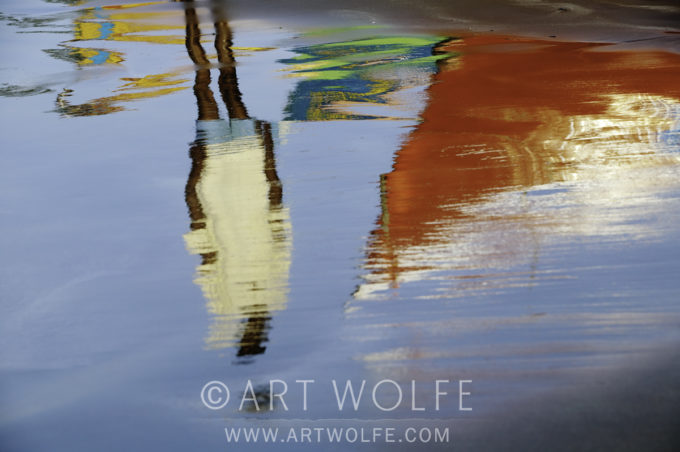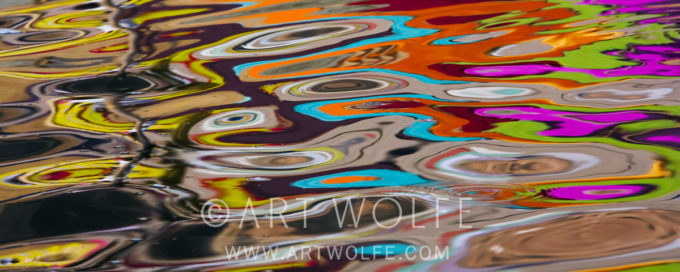Technique Tuesday: Photographing Reflections
This excerpt is from “Photographs from the Edge”, which not only details the stories behind some of my most well-known captures from across the globe and throughout my career, but is also filled with tips and tricks and equipment information.

June 2013: Canyon Wall Reflection, Kimberley, Australia
Canon EOS 5D Mark III, EF 24-105mm f/4 lens, f/4 for 1/1250 sec., ISO 2000
The nature of the photo: The Kimberley region of Australia sits in the far northwestern part of the continent. The area is known for its sandstone and limestone gorges and steep cliffs. The land has a maximum height of a little over 3,000 feet, but the terrain is so steep that the country is difficult to move through except by boat along the coast.
The fine art world has long been important to me, since that was what I studied in college. Many painters have influenced my own work. The image here reminds me of the work of Gustav Klimt and his homage to the pointillist painters of his time. These included a series of paintings of women with very ornate dresses.
As I traveled by boat through the inlets and canyons along the coast in the Kimberley area of northernwestern Australia, I found that the reflections of the canyon walls in the water reminded me of the color palette and design within Klimt’s dresses. In this image, you can see the ocher-colored cliffs reflected in the disrupted surface of this saltwater inlet, along with the blue sky above.
I love these moments where the abstraction takes on all sorts of forms that remind you of other things, things that become metaphors for me. You can get lost looking at the details of this image, seeing “faces” and other shapes. I find that these abstracted pieces with embedded images draw the viewer into them.
In the center of this photo, I see the eye and ears of a goat. Other people will see something entirely different. That’s how an image like this one can engage people on a very different level than simply one of recognition.

Photo tip: Water is a wonderful reflective surface in nature and offers so many opportunities for the observant photographer. Look for reflections, both on still water and on water that is disturbed and creating unique patterns and rhythms. Be careful of using a polarizing filter with reflections because it can remove key elements of those reflections on water.



